Shopify vs Etsy? What’s better, which should you focus on and which can make you the most money? Etsy is often overlooked by most dropshippers for many reasons, but is selling on Etsy worth it ?
Isn’t Etsy for housewives selling their knitting?
Far from it! Etsy is a huge marketplace full of buyers. It may not rival Amazon in terms of numbers but it has a very unique and very loyal audience…and they buy. They trust Etsy and many of them want to support what Etsy stands for.
If you have a Shopify store, dropshipping and selling through Facebook ads then you have a proven formula for making money with dropshipping. It is a model that requires a lot of money – and nerves of steel. You rely heavily on making an ROI and you can easily lose a lot of money.
Selling on Etsy is different because you do not rely on an ROI. You are leveraging Etsy’s huge amount of organic traffic. You rely (almost) entirely on free traffic but more on this later.
Shopify vs Etsy: What Are You Selling?
Etsy the largest marketplace for handmade products. This is what sets Etsy apart from Ebay, Amazon and Wish.
You can think of Etsy a bit like a local market where people get to sell their handmade products – but with a global online audience. Although Etsy has evolved, the principle of handmade products has not changed and they are super strict about this.
What you are selling will determine if you sell on Shopify or Etsy – or if you are even qualified to sell on Etsy.
With a Shopify store you can sell basically anything. On Etsy, you need some sort of handmade element on your product.
So, what if you sell baby pacifiers from Aliexpress?

In that case you should either stick to Shopify or you should innovate and add something handmade to your products to qualify to sell your products on Etsy. Offering custom engraving on products is the easiest way to turn generic AliExpress products into Etsy bestsellers.
It is not the only way to add a handmade element to products. There are many more ways to do this and you have to be a bit more creative if you want to offer Etsy buyers something truly unique.
It does require a few extra steps and a lot more work, but the payoff can be huge as it allows you to tap into Etsy’s huge marketplace.
Dropshipping products from China to a 3rd party fulfillment center that can do engraving is something that anyone can set up. So, regardless of the products you sell, you can get into Etsy even if you are currently only selling through Shopify.
What Are Your Goals?
With Shopify…
With Shopify you are on your own. When you set up your store on Shopify you are basically thrown into the abyss of the interwebs. Chances of anyone finding your store is basically zero.
You will need to do lots of marketing for people to find you and your products. But, you have your own domain, your own brand and everything on your Shopify store is about your product(s).
If you want to build a brand then Shopify is your best option.
If you want to build a single product store then Shopify is your best option. With your own store where you control absolutely everything about the look and feel of the store you can build a brand around one, a few or a whole catalog of products.
Although Shopify is the easiest of all eCom platforms it still has a learning curve in getting it set up, creating products, accepting payments and running the store. Installing apps and editing themes can be overwhelming for someone who has not tech skills.
With Etsy…
You are a seller in their marketplace. Yes, you open a store on Etsy but your store exists within the world of Etsy.

You have a lot of strict rules to abide to and you have very little creative freedom in how your store looks or feels. The Etsy brand is the dominant part and your own Etsy store branding will always be secondary.
When you open your Etsy store you will almost immediately be found since there is a ready and hungry marketplace – actively looking for products 24/7.
Selling just one (or a few) products on Etsy does not make sense. You will need a large catalogue of products to spread yourself broadly and increase your chances of being found.
While you give up control, you gain exposure and the potential for huge amounts of organic sales. These are sales that you do not have to do much work for apart from creating your Etsy listing.
If you want to sell a variety of handmade products and not worry about advertising, building a brand or constantly having to find buyers for your products then Etsy is the place for you.
Getting your Etsy store set up is incredibly simple and requires absolutely zero technical skills. Accepting payments and running your Etsy store is as simple as it gets and they do all the hard work for you.
Shopify vs Etsy: What You Need to Get Started
With Shopify…
To get started with Shopify you need a Shopify account. You can get a free 2 week trail which gives you enough time to get set up but its not free. You will also need your own domain, an email address (for customer service).
Obviously you need products to sell but more importantly on Shopify you need to be set up to handle inventory and fulfillment. With dropshipping this is easy with apps like Oberlo and Dropified.
You need to be able to accept payments and for this you need a merchant account.

Paypal is probably the easiest and if you live in the USA, UK and most of Europe you can just activate Shopify Payments. You will be required to fill out a few forms and they will verify your existence before you get approved.
If you live outside of these main countries it can be tricky to get set up with Shopify. Stripe is a payment processor that serves a lot of countries (Shopify Payments also work through Stripe) and easily integrates with Shopify once you have an account.
You will “get paid” via Shopify Payments or Stripe to your bank account – usually on a weekly basis or when certain thresholds are met.
With Etsy…
To get started you need to create a free Etsy account and that’s pretty much all you need to get started. Your store will exist within the Etsy realm. They take care of all payments and all technical aspects of the store itself.
Obviously you need to products that you can ship once the orders come in. You will also need to provide tracking numbers once you ship orders.
There are a lot less restrictions on who can sell on Etsy and you can have an Etsy store from many different countries. There are some exceptions but you need to be able to fulfill orders to the countries you intend to sell to on Etsy.
When you consider Etsy vs Shopify then this is the biggest difference. Etsy is free and easy. Shopify costs money and can be complicated. However, you give up almost all control when you go with Etsy.
Shopify vs Etsy: Fees, Costs & Expenses
Fees and costs are often overlooked but it can quickly add up and eat into your profits. If you are not careful with fees you can get burned and even lose money. Its important that you factor in fees when you list your products.
With Shopify…
The fees are not that straightforward as it is determined by what plan you are on. The basic plan costs $29.00 per month. That gets you Shopify and the use of the entire platform.
On top of that Shopify Payments charges a 2.9% fee PLUS 30 cents per transaction and that is for the entire transaction value. This 2.9% fee decreases to 2.15% with the Shopify Plus Plan.
A big expense on top of all this with Shopify is with Apps. Shopify is a bare basic platform and although it gives you everything you need, you will probably need a few apps to expand your store’s functionality.
App costs can quickly add up and the average app is about $10/month but this varies greatly depending on the app.
With Etsy…
You basically have 2 expenses. The first is the $0.20 per listing. This is not really for them to make money but rather to deter people from uploading thousands of garbage products. This listing fee will renew every 4 months.
So for 100 products you will pay $20 every 4 months to keep your listings active.
On top of the listing fee, Etsy charges 5% per transaction for the entire transaction value of the listed price.
There are a few “hidden costs” you have to consider when you weigh up Etsy vs Shopify.
Local taxes will be either collected by Etsy or by you on Shopify. This has to be paid and is a real expense. Returns and refunds is something you can never escape and something you have to factor in.
With Shopify you will often get chargebacks. These are a pain to deal with and usually costs you $30 unless your counterclaim is successful.
If you are an international seller then there will always be fees to be paid for currency conversion to and from bank accounts or when customers pay with a foreign currency.
It can get very complicated so make sure you access things given your personal situation.
Etsy vs Shopify: Free Traffic (SEO)
You can get free search engine traffic with both a Shopify store and with Etsy. When it comes to free traffic Etsy is vastly superior. Apart from getting into Google searches much easier (because of Etsy’s domain value) there is a huge amount of free traffic on Etsy itself.
With a Shopify store you will have to do a fair amount of SEO if you want to start seeing some trickles of free traffic. If you want to see decent amounts of free traffic with a Shopify store you will need to put in a lot of work.
You will most likely have to add a blog to your store and post content to give the search engines something to look at.
You can also look into Pinterest and other social networks to get free traffic to your Shopify store but to be brutally honest, this pales in comparison with the amount of traffic available on Etsy.
Etsy vs Shopify: Paid Traffic
Creating a Shopify store, adding great products and running paid advertising to your store is the most common formula. Its proven to work but comes with a lot of expenses. Advertising is not cheap and getting a positive ROI is getting harder every year.
You do have a lot of options though. Facebook Ads, Google Ads, Pinterest, Instagram ec.
With Etsy, you typically price products much lower to be competitive. This means there is a lot less “fat” for advertising. Etsy Marketing allows you to run advertising on the Etsy platform itself.
This is how you can pay to jump to the top of search results in Etsy. It also has some presence in Google Shopping ads. Compared to other ad platforms, Etsy clicks are dirt cheap but you are of course limited to advertising only the products in your Etsy store.
Its a great way to get the ball rolling on your Etsy store and to test if your products will sell before you pour your life into Etsy. I highly recommend you do this – even at a low $5/day budget.
Is Selling on Etsy Worth It ?
Whether selling on Etsy is worth it or not depends on what you consider “worth it”? If you are making $20k/day selling dropshipping products from China then you probably won’t see those figures from Etsy.
If you are sick and tired of Facebook ad accounts getting shut down, Aliexpress sellers’ shenanigans and answering customer support emails all day long then Etsy is absolutely worth it.
You can run a successful Etsy store that makes a full time income by doing it only part time. Putting in 2 to 4 hours per day is definitely doable but this depends a lot on your products and your fulfilment strategy.
Financially Etsy is worth it because it requires very little investment to get started. With a few dollars you can build an entire store that taps into Etsy’s huge marketplace.
The rest is pretty hands off as all the “marketing” is done on autopilot. You rely on the organic traffic from Etsy. Yes, there are tweaks to make, good images to create and proper product listings to write but once your store is set up it is as hands-off as running a store gets.
It takes a big investment of time up front to get your Etsy store set up and looking good. Once this is done you can sit back and just manage the store which should not take much time at all – at least compared to a dropshipping store on Shopify.
Selling on Etsy AND Shopify
While we’ve been looking at Etsy vs Shopify there is another strategy which is overlooked by far too many dropshippers. How about selling on Etsy and Shopify?
Why not leverage Etsy to expand your Shopify store?
How is this possible?
Firstly, if you are doing Print on Demand then selling the exact same products on Etsy is a no brainer.

Etsy integrates perfectly with a number of POD suppliers (read more on Printful and Etsy here) which makes it very easy to run an Etsy store with very little extra work. You basically push your existing products to an Etsy store and sit back while you cash in on Etsy’s organic traffic.
If you are selling your own handmade products on your Shopify store then you can expand to Etsy. With the Etsy Marketplace Integration app you can push your products from your Shopify store to Etsy.
The app does all the heavy lifting and you just have to manage your Shopify store as usual. This is an easy win to expose your products to a broader audience.
If you sell generic/commercial products on your Shopify store and you offer customization or personalization you may qualify to sell them on Etsy.
In this case you can also integrate with Etsy but there may be some more advanced ninja tricks involved to get the customisation and product orders synced between Etsy and Shopify. I have seen this and it certainly is possible.

